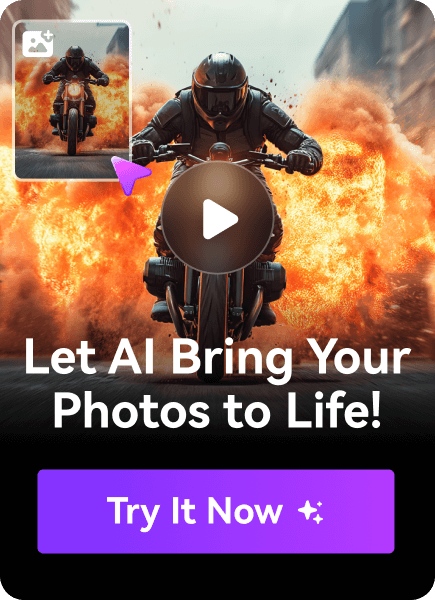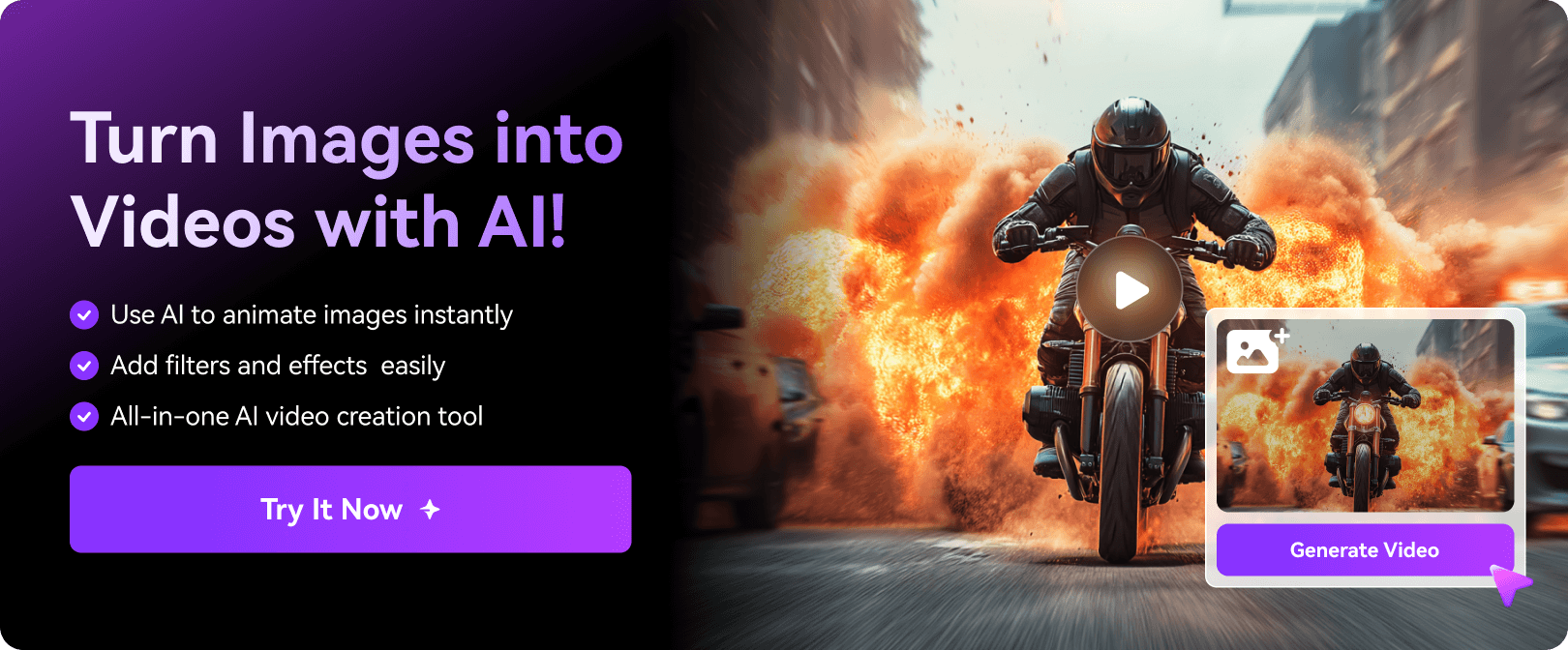Ever wondered how you can create good images without paying a hefty subscription fee? Maybe the answer lies in open-source AI image generators. By leveraging AI, these tools generate images using your prompts.
Whether you are an artist, designer, or content creator, an open-source AI generator helps create unique images in the shortest possible and most affordable way. Plus, with customizations like artistic styles and pellets, these tools give you control and liberty over the creative aspects.
But the question is, which open-source software is the best text-to-image generative software? Let's take a look at the five best open-source AI image generators.
In this article
Part 1. What are Open-Source AI Image Generators?

Like the non-open source, open-source AI image generator relies on artificial intelligence to generate an image from a text prompt. However, their source code is free to use, modify, and distribute.
Standard models used for this purpose are advanced models, typically diffusion or GAN Generative Adversarial Networks), designed to analyze the given text and generate the images appropriately. As open-source, developers can change and adapt them for various uses, while users can apply them without constraints.
Consequently, open-source AI image generators have opened a powerful means for users to create custom visuals. Be it an artist, designer, or content creator, they help the idea take shape quickly with good quality. Users can test out various prompts, produce images in many styles, and refine their work. The best part? No licensing fees are charged.
Part 2. Factors to Consider When Choosing Open-Source AI Image Generator
Quite a few factors go into choosing an open-source AI image generator that should ensure appropriateness for your needs. Let’s discuss some key ones.
1. Model Quality and Output
The most significant factor is the quality of the images generated. Try generators with advanced models like diffusion models or Generative Adversarial Networks (GANs). Such models are known to create much more realistic, high-resolution outputs. Test the quality of images the tool produces and see how well it handles complicated details and complex prompts.
2. Ease of Use
Although open-source tools are customizable, it would require some technical savvy to use it well. Choose tools with a user interface or clear documentation if you are not a skilled developer. Platforms that have GUIs or well-maintained tutorials will make the process smoother.
3. Customization and Fine-Tuning
Some open-source AI image generators can be fine-tuned for specific needs, such as making images in a particular style or theme. If you want to create images of a very personal kind, that's a nice feature to have. However, it should be well-documented and supported.
4. Community Support
Since open-source tools are community-driven, one must choose an active tool with developers. The more active the community, the better the support for troubleshooting, updates, and improvement. Forums, GitHub repositories, and discussions must be checked to gauge the activity and support.
5. Performance and Speed
AI image generation can be resource-intensive, especially for high-resolution images. Consider the performance of the tool in terms of speed and resource usage. If you’re generating multiple images or working on large projects, ensure the tool can handle the load efficiently.
6. Licensing and Legal Considerations
Although these open-source AI tools can be employed free of charge, read the agreements first. Some may also limit use for commercial purposes or require attribution to make the license acceptable for business.
7. Hardware Requirements
Open-source image generators may vary in hardware demands. Some require more powerful GPUs for optimal performance, while others are very lightweight. Be sure that your system is powerful enough to handle the computational needs of the selected tool.
Part 3. 5 Best Open-Source AI Image Generator in 2025
1. Stability.AI – Best for Beginners

Stability.AI is a well-known AI generative software with a simple diffusion model. It allows users to create images with simple prompts. Fine-tuning lets them further perfect outputs for unique projects, while high-quality rendering ensures professional visual results. Stability AI makes creativity simple, accessible, and powerful for everyone.
Key Features
- Generative AI Across Modalities: Advanced AI models in image, video, audio, 3D content, and natural language creation.
- 3D Content Creation: Uses Stable Video 3D to produce detailed 3D objects from single images.
- Self-Hosted AI Models: It allows businesses to gain complete control over the data and privacy by having on-premises options.
- Developer API: Simplifies the integration of AI image generation into applications with a user-friendly API.
2. DeepFloyd IF – Best for Photorealism

DeepFloyd IF is a powerful AI tool that can generate images from text, based on the diffusion model. It offers features like multi-lingual support, high resolution, and photorealism. It helps users quickly generate high-quality images, regardless of language, and efficiently fine-tune the details like art styles, filters, realism, etc. Overall, DeepFloyd IF is ideal for artists, content creators, and designers just starting their creative journey.
Key Features
- Advanced Text Prompt Understanding: It uses an advanced T5-XXL-1.1 language model for better text-image prompt alignments than generated images with stronger cross-attention layers on text images.
- Integration of Text in Images: Incorporates text seamlessly into images alongside objects and spatial relationships, solving a challenge many other AI generative models.
- Flexible Aspect Ratios: Produces images from the non-standard vertical and horizontal formats in many aspect ratios.
- Zero-Shot Image-to-Image Translation: The images underwent resizing, noise addition, and denoising by a novel prompt without losing the structural features but having stylistic differences.
3. FLUX.1 – Best for Artistic Styles

FLUX.1 is one of the most advanced AI tools using a diffusion model to generate high-quality images from text prompts. What I like about FUX.1 is its fast image generation, fine-tuning options, and multi-style capabilities. With this, you can create images in different artistic styles, including realistic, cartoonish, or abstract. Having a well-rounded interface makes it perfect for designers, artists, and content creators to quickly bring unique ideas to life.
Key Features
- Cutting-Edge Image Quality: Generates exceptionally detailed and photorealistic visuals through sophisticated Rectified Flow Transformers and concurrent attention layers.
- Versatile Generation Abilities: Allows for text-to-image and image-to-image, opening up creative possibilities and exact changes.
- Improved Prompt Response: A better understanding of complex textual instruction shows giving outputs that best fit the user intent.
- Diverse model variants: The company offers custom versions, including Flux.1 Pro, Flux.1 Dev, Flux.1 Schnell to cater to different needs. Supports the vast platform: DeepInfra, Hugging Face, and Replicate are among the top AI platforms.
4. Waifu Diffusion – Best for Anime Art

Source: https://blogs.novita.ai/waifu-diffusion-final-release-notes/
Waifu Diffusion is a powerful AI tool designed to create anime-style images from text descriptions using a simple diffusion model. Its standout features include custom-style generation, easy fine-tuning, and high-resolution outputs. These features help users generate unique anime artwork and personalize it to their specific styles or preferences, making it perfect for artists and anime enthusiasts to effortlessly bring their ideas to life.
Key Features
- Finetuned Stable Diffusion Model: Based on the Stable Diffusion v1.4, explicitly optimized for anime and art-style generation.
- Extensive Training Dataset: Trained on 680,000 text-image samples with high-quality tagging.
- High-Quality Outputs: Supports detailed and accurate anime-style images with improved control through prompts.
- Optimized Data Preparation: Support modification features like removing underscores and randomizing tag order for better outputs
5. Craiyon – Best for Creative AI Art Generation

Craiyon is a beginner-oriented tool for AI image generation. Its standout features include free image generation, text-to-image conversion, and upscaling for enhanced resolution. Negative prompting helps exclude unwanted elements from a generated image, while prompt prediction refines results. It also offers commercial user rights and community support, so users can easily create different images.
Key Feature
- Customizable Image Enhancements: The user can fine-tune his prompt for "Upscaling" or achieve resolution with his image to gain the resolution.
- Negative Prompting: The user can also use negative words to remove the unwanted objects in the images.
- Creative Freedom: Generates all sorts of images, ranging from imaginative ideas to artwork themes based on user input.
- Community and Support: An active Discord community and regular updates to enhance and enrich the user experience.
Part 4. Comparison Table
Here is the comparison table to help you make your decision-making process more manageable.
| AI Image Generator | Price | Output Speed | Accessibility | Best For |
| Stability.AI | Free | Fast | Web and App | Versatile visuals |
| DeepFloyd IF | Free | Fast | Web and App | Photorealism |
| FLUX.1 | Free + subscription | Fast | Web and App | Artistic styles |
| Waifu Diffusion | Free | Fast | Web and App | Anime art |
| Craiyon | Free (Pro available) | Fast | Web and App | Creativity |
Part 5. Wondershare Virbo: An All-in-One Image Generator

Start Online For Free
Although this is not an open-source platform, Vibro is an excellent choice for those seeking efficient image creation. Its image generator features a collection of art styles and filters to achieve accurate output. Plus, with intuitive editing tools, Vibro simplifies content production, accommodating newbies and professionals.
Its remarkable features include the ability to generate virtual reality graphics without expert coding skills. With the help of its cross-platform connection, you can connect with different apps, making it easy and accessible for the users.
Users can also leverage Virbo’s template collection and AI technology to generate videos, clips, and scripts, according to their needs. Specifically, its advanced tools, such as montage makers, clip generators, and talking photos, take creativity to another level.
Unlike open-source AI tools, which demand technical expertise, Vibro ensures there is no hassle. The subscription-based model provides users with the finest resolutions and dedicated customer support, which makes it reliable for professional-quality visuals with minimal effort.
Conclusion
Open-source AI image generators are changing how we create images, making them easier, faster, and cheaper than ever. These tools empower artists, designers, and content creators to bring their ideas to life with customization, fine-tuning, and various artistic styles.
They offer flexibility and accessibility to users of all skill levels by eliminating licensing fees and offering a wide range of creative possibilities. Whether working on professional designs or personal projects, open-source AI image generators are game-changers that help you turn simple text prompts into stunning visuals.
So what are you waiting for? Start using an open-source AI image generator, save your dollars, and generate endless images.



